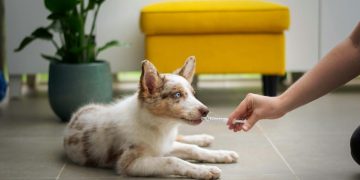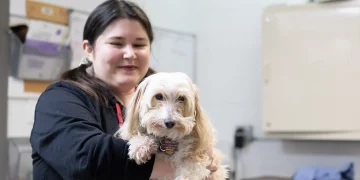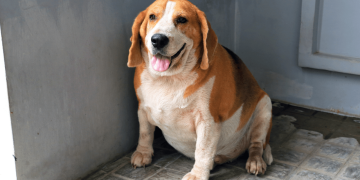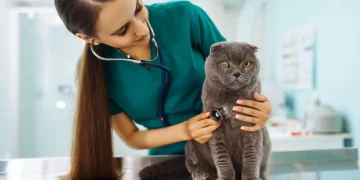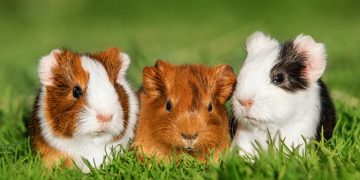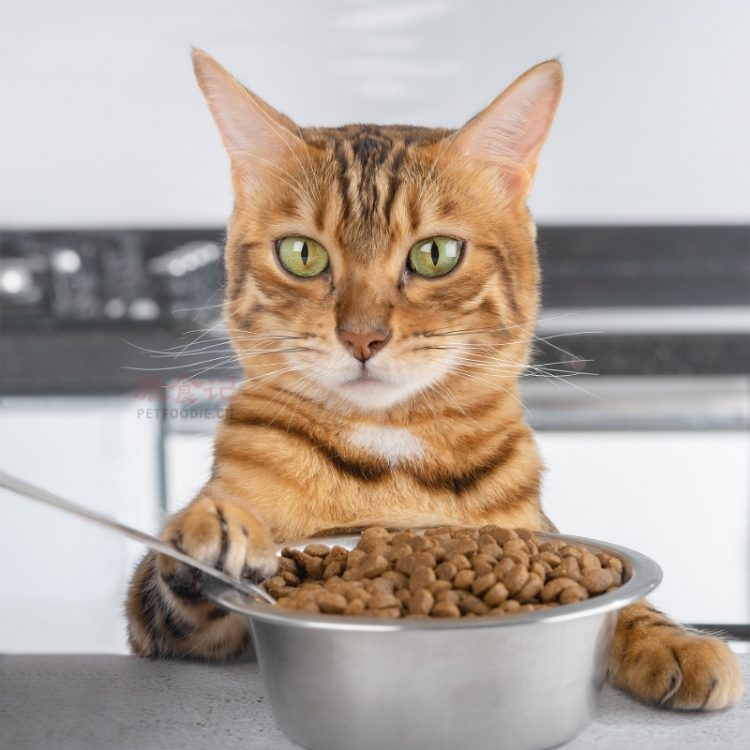If you have a cat, you might have experienced the frustration of dealing with a picky eater. Unlike dogs, who are often happy to chow down on whatever food is placed in front of them, cats can be quite selective about their meals. They may refuse to eat certain foods, become bored with their regular meals, or only eat at certain times of the day. As a responsible pet owner, it’s important to help your cat develop healthy eating habits to ensure they get the nutrition they need to stay happy and healthy.
In this article, we will explore why some cats can be picky eaters, the potential risks of poor eating habits, and practical tips on how to encourage healthy eating and establish a consistent feeding routine for your cat.
Why is My Cat a Picky Eater?
Before we dive into solutions, it’s important to understand why your cat might be displaying picky eating behavior. There are several reasons why cats can be finicky about their food:
1. Natural Instincts
Cats are obligate carnivores, meaning they rely on a diet that is primarily made up of animal protein. Unlike dogs, who have evolved to consume a wider variety of foods, cats are highly selective about the texture, scent, and taste of their food. They might refuse certain foods if the smell is unfamiliar or if the texture doesn’t appeal to them.
2. Food Preferences and Sensitivity
Just like humans, cats have their own preferences. They may have a particular taste or texture they enjoy, such as wet food over dry kibble, or vice versa. Cats can also be sensitive to certain ingredients, which can cause gastrointestinal upset if they eat something that doesn’t agree with them.
3. Health Problems
If your cat suddenly becomes picky about food or stops eating altogether, it may be due to an underlying health issue. Dental problems, gastrointestinal conditions, or even infections can make eating painful or uncomfortable. If your cat’s eating habits have changed dramatically, it’s important to consult a veterinarian to rule out any medical issues.
4. Overfeeding or Spoiling
If your cat is regularly offered a variety of food choices, or if they are frequently given treats, they may become accustomed to being “spoiled” and may start rejecting their regular food in favor of something tastier. Overfeeding or offering too many treats can lead to poor eating habits and make your cat less likely to eat their regular meals.
5. Stress or Change in Environment
Cats are sensitive creatures and can be affected by changes in their environment, routine, or even their social interactions. Moving to a new home, introducing new pets, or changes in the household can cause anxiety and stress, which can manifest in a loss of appetite or picky eating behavior.
Potential Risks of Picky Eating in Cats
Allowing your cat to continue their picky eating habits can lead to several health issues:
1. Nutritional Deficiency
Cats need a balanced diet with the right mix of proteins, fats, vitamins, and minerals to thrive. If your cat isn’t eating enough or is being overly selective, they may not be getting the nutrients they need, leading to weight loss, poor coat condition, and overall health deterioration.
2. Obesity
On the flip side, some cats may overeat if they’re offered a variety of foods or if they are being overfed with treats. Overeating can lead to obesity, which puts stress on their joints and increases the risk of diabetes and heart disease.
3. Digestive Problems
Regularly changing your cat’s food or offering a wide variety of different types of food can lead to gastrointestinal issues. Cats are creatures of habit and may develop digestive upset if they are not given a consistent diet.
4. Behavioral Issues
If you frequently give in to your cat’s picky eating habits, you may inadvertently reinforce the behavior. Cats are smart and can quickly learn to manipulate their owners for special treats or food preferences. This can create ongoing challenges with mealtime and lead to a pattern of finicky eating.
Tips to Encourage Healthy Eating Habits in Cats
Now that we’ve explored the potential causes and risks of picky eating, let’s focus on how to help your cat develop better eating habits. With patience and consistency, you can encourage your cat to eat a balanced diet and avoid the frustrations of dealing with a finicky eater.
1. Establish a Consistent Feeding Routine
Cats thrive on routine. Establishing a set mealtime schedule can help create a sense of stability and predictability for your cat. Serve meals at the same time every day, and avoid leaving food out all the time for grazing. This will encourage your cat to eat when food is offered and help regulate their appetite.
- How to do it: Offer food two or three times a day at consistent times. Remove any uneaten food after 20-30 minutes to prevent your cat from getting used to having food available at all times.
2. Stick to a Balanced, High-Quality Diet
Ensure that you are feeding your cat high-quality food that meets their nutritional needs. Look for cat food that lists a high percentage of animal protein (such as chicken, turkey, or fish) as the primary ingredient, as cats need protein to thrive. Avoid foods that are filled with fillers, such as corn or wheat, which provide little nutritional value.
- How to do it: Consult your veterinarian to find the best food for your cat’s specific needs (age, health condition, activity level, etc.). You can choose between wet food, dry food, or a combination of both. Some cats prefer wet food because it’s more aromatic and flavorful.
3. Gradually Transition Between Foods
If you need to switch your cat’s food (for example, to a new brand or flavor), do so gradually. Cats can be sensitive to abrupt changes in their diet, and a sudden transition can lead to digestive upset.
- How to do it: Start by mixing a small amount of the new food with their current food. Gradually increase the proportion of new food over a period of 7-10 days until your cat is fully transitioned to the new food.
4. Experiment with Different Textures and Flavors
If your cat refuses to eat a certain type of food, try experimenting with different textures and flavors. Some cats prefer pate-style wet food, while others may prefer chunks or gravy-based foods. If you’re offering dry food, try different brands or flavors to see what appeals to your cat.
- How to do it: Offer a variety of textures and flavors, but always make sure the food is nutritionally balanced. Avoid giving too many different options at once, as this may confuse your cat.
5. Limit Treats and Table Scraps
It’s tempting to spoil your cat with treats or scraps from your own meals, but this can create unhealthy eating habits. Too many treats can spoil your cat’s appetite, and feeding them human food can cause gastrointestinal upset.
- How to do it: Limit treats to no more than 10% of your cat’s daily caloric intake. Stick to high-quality cat treats that are formulated for their specific needs. Make sure you’re offering healthy, appropriate food for their age, health, and dietary requirements.

6. Encourage Eating with Interactive Feeders
If your cat is reluctant to eat, you can try using interactive feeders or puzzle toys to encourage them to engage with their food. These feeders can make mealtime more exciting and mentally stimulating, especially for cats who may be bored with their regular feeding routine.
- How to do it: Place your cat’s food in an interactive feeder or puzzle toy that requires them to work for their meal. This not only encourages your cat to eat but also provides enrichment and helps them burn off some energy.
7. Ensure a Calm and Stress-Free Eating Environment
Cats are sensitive to their environment, and stress can cause them to lose their appetite. Make sure your cat has a quiet and peaceful space to eat without distractions or interruptions from other pets or household members.
- How to do it: Place your cat’s food in a quiet area away from noisy appliances or other pets. Ensure that your cat has a comfortable, stress-free environment where they can enjoy their meal undisturbed.
8. Monitor for Health Issues
If your cat’s picky eating habits are sudden or severe, it’s important to monitor for any signs of illness. Cats may stop eating due to dental problems, infections, gastrointestinal issues, or other medical conditions. If your cat is not eating at all, has lost weight, or shows other signs of illness, contact your veterinarian immediately.
Conclusion
Dealing with a picky eater can be frustrating, but with the right approach, you can help your cat develop healthier eating habits. By establishing a consistent feeding routine, offering a balanced and high-quality diet, and limiting treats, you can encourage your cat to eat the right amount of food for their health and well-being. If your cat continues to have difficulty eating or if you notice any signs of illness, always consult your veterinarian to rule out underlying health issues.
With patience and consistency, you can help your cat develop a healthy relationship with food and ensure they are getting the nutrition they need to thrive.








